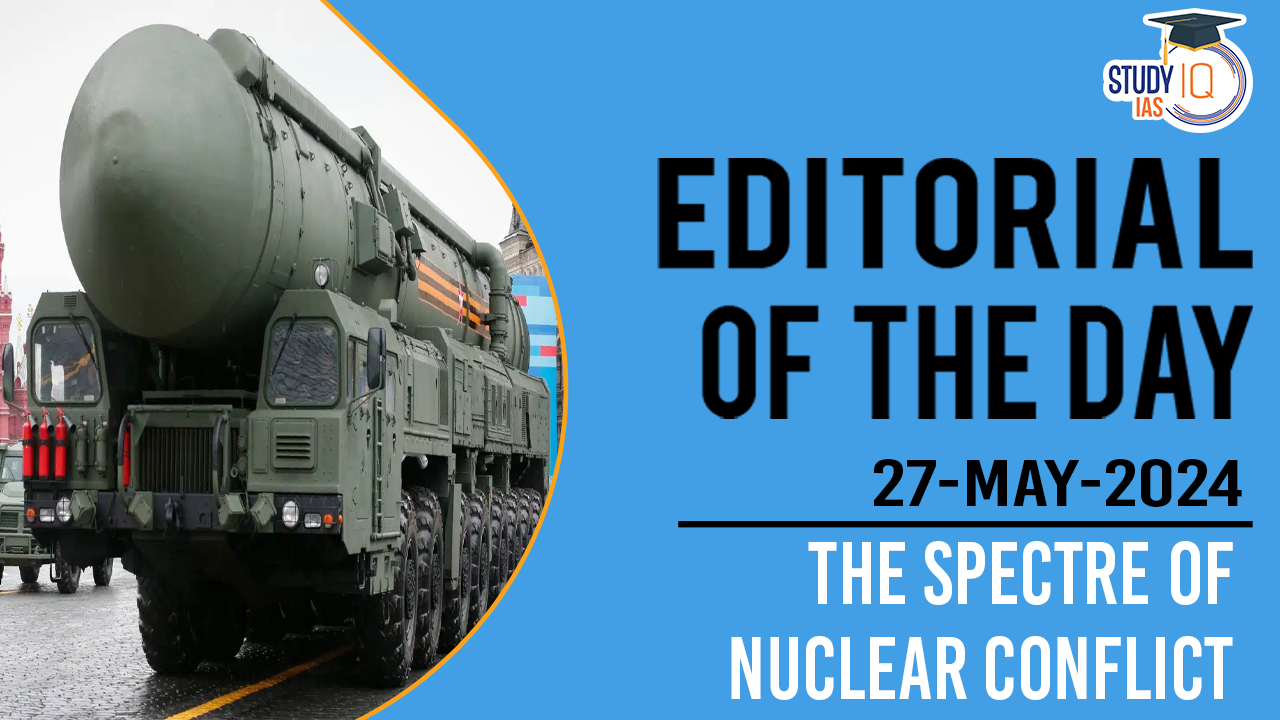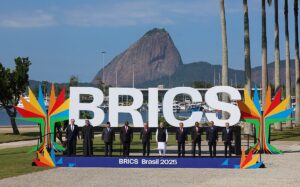Table of Contents
Context
- The world is witnessing a resurgence of nuclear threats, particularly in the wake of the Ukraine war and Russia’s increasing belligerence.
- Prominent leaders’ rhetoric often hides the truth, necessitating nations to discern the hidden meanings behind their statements.
Various Leaders’ Stances
Emmanuel Macron’s Apocalyptic Vision:
- French President Emmanuel Macron has warned of a potential nuclear conflict, describing a future marked by the danger of nuclear annihilation.
- His remarks, particularly concerning the Ukraine war and Russian President Vladimir Putin’s nuclear threats, have garnered significant attention in Europe.
- Macron’s emphasis on France’s substantial nuclear arsenal adds weight to his warnings. He plans to highlight these nuclear concerns at the European Political Community meeting in July.
Vladimir Putin’s Nuclear Stance:
- During the Victory Day Parade, Putin asserted that Russia’s nuclear forces are always on alert and warned against Western threats.
- In November 2023, Russia revoked its ratification of the Comprehensive Test Ban Treaty (CTBT), claiming it was to balance nuclear capabilities with the U.S., which never ratified the treaty.
- This move has been met with hostility from the international community, reversing the shift towards greater nuclear confidence.
China’s Preparedness
- China is advancing its nuclear capabilities, recently completing sea trials for its aircraft supercarrier equipped with electromagnetic catapults and building a fourth carrier.
Lessons from the U.S.-India Nuclear Deal
- India had not signed the Nuclear Proliferation Treaty (NPT) or the Comprehensive Test Ban Treaty (CTBT) and had conducted nuclear tests in 1998, leading to sanctions.
- Outcomes:
- The deal led to India separating its civilian and military nuclear programs, adhering to export control regulations, and accepting a voluntary moratorium on nuclear testing.
- TheS. amended its domestic laws, facilitating the Hyde Act and the 123 Agreements, and approached the Nuclear Suppliers Group (NSG) to ease nuclear restrictions on India.
- An India Specific Safeguards Agreement from the International Atomic Energy Agency (IAEA) gave India a status similar to a nuclear weapon state under the NPT.
- Significance of the Deal:
- The deal significantly transformed India-U.S. relations from technology denial to a major technology partnership.
- It led to new heights in economic and defence relations and made India an essential partner of the U.S. on regional and global issues.
- Key Takeaways:
- The U.S.-India nuclear deal demonstrates the power of diplomacy and compromise in resolving complex international disputes.
- Overcoming psychological barriers and building trust are crucial for improving relations between nations.
- Nuclear energy can be a valuable resource for peaceful purposes when managed responsibly and with appropriate safeguards.
| Non-Proliferation Treaty |
|
| Comprehensive Test Ban Treaty (CTBT) |
|
Conclusion
As the world grapples with the growing threat of nuclear conflict, the lessons learned from the U.S.-India nuclear deal offer a glimmer of hope. By prioritising diplomacy, building trust, and finding common ground, it may be possible to avert disaster and ensure a safer future for all.


 Elon Musk’s America Party: A New Chapt...
Elon Musk’s America Party: A New Chapt...
 Bihar Assembly Election 2025: Complete G...
Bihar Assembly Election 2025: Complete G...
 17th BRICS Summit 2025: India’s Leader...
17th BRICS Summit 2025: India’s Leader...





















